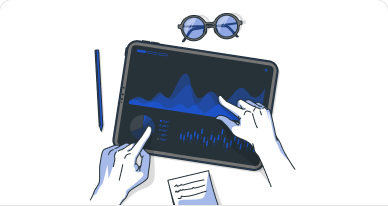Economics for investment banking
Fmi Online Monthly SubscriptionThe Economics for investment banking course will benefit people looking for a career in either the corporate finance division or the global markets division of an investment bank. It is also incredibly valuable for people looking at a career in asset management. This course is designed for people looking for a practical approach to macroeconomics, rather than a course that focuses on economic theory.
About Instructors
Reviews
Frequently asked questions
Fmi's courses and learning pathways have been recognised and curated by MDA Training. Our Learning Pathways have been created by industry experts and designed to boost your career opportunities with practical skills, tools and insights. So far, we have successfully trained over 200k learners in prestigious financial institutions for over 35 years.
Absolutely not. The fees for our Learning Pathways and courses are clearly displayed and there are no hidden fees. There are also no contract obligations or auto-renew agreements with Fmi.
Yes. Please get in touch and we will tailor a package that meets your needs. Fmi is part of the MDA Training Group. MDA Training specialize in corporate training solutions and so we'd be delighted to explore your needs and put together a solution.
Our Learning Pathways offer best value compared to individual courses, so do check these out. On occassion we also run promotions that offer discounts on our Learning Pathways and Courses - so do sign up to our Fmi Learners Community to stay up-to-date on our latest offers.
Our Learning Pathways are designed to boost your career opportunities by helping you gain up-to-date skills and knowledge all financial institutions are looking for right now. Fmi online is a recognised name in financial services training across the globe. Upon completion you will be eligible for a Fmi certificate which is recognised and curated by MDA Training.
We accept all major debit and credit cards (Visa, Mastercard, etc) and Paypal. Please get in touch should you need to organize payment via an alternative platform - we'd be happy to help.
Absolutely, our pathways are structured to bridge the gap between academic study/theory and real-world practical skills needed to start your career in finance. Our Learning Pathways have been carefully designed to provide a cost-effective way to learn key skills aligned to specific roles and careers. Our simulations which are often used by prestigious financial institutions all over the world as part of their intern and graduate development programs, will enable you to gain practical skills and insights that you will be able to utilize in your job applications, interviews and also in your early career in financial services. With Fmi, you can also take advantage of our mentor services to support you with your application process.

Explore our pathways
Investment banking pathway
Monthly Subscription60+ hours
9 courses
Investment banking offers many exciting career opportunities for students. From Financial Analysts to Investment Management, and Sales & Trading to a wide range of roles in infrastructure such as IT, Risk or Compliance. This pathway is designed to help you understand the investment banking industry, the roles investment banks are recruiting for, and most importantly, help you to develop the practical skills you need to get into the industry and your preferred role whether this be as part of a school leaver, intern or graduate program.
learn more


Global markets pathway
Monthly Subscription70+ hours
10 courses
Global markets provide a range of important products and services to corporates, institutions and governments worldwide from executing trades and managing risk to providing quality research content. A key business area in all investment banks, global markets offers a wide range of career paths for students to consider across all functions and at all levels from school leavers to internships through to graduate programs.
learn more


Asset management pathway
Monthly Subscription50+ hours
8 courses
The asset management industry is a global industry worth over 100 trillion US dollars. It plays a crucial role in managing the assets of retail and institutional investors, offering a wide range of exciting careers in doing so. If you’re looking to forge a career in asset management, our Asset management pathway is perfect for you. We help you build the skills all asset managers are looking for and explore everything you need to know about the industry and the wide range of roles available in the sector
learn more



Can’t commit to our learning pathway? Try our free courses instead
Let our industry experts help you. Take a look at our CareerBuddy videos now.
1+ hours
4 modules
An ideal introduction to equities and equity markets for anyone working in the financial services sector, learn about how companies are funded, how equities trade in the market, and the returns which can be earned. For free.
Enroll now for free


1+ hours
4 modules
The currency market is the largest and most liquid market in the world. Take the currency to equip yourself with the key skills to understand the jargon and the mechanics of the currency market.
Enroll now for free






 60+ hours
60+ hours 9 courses
9 courses 

